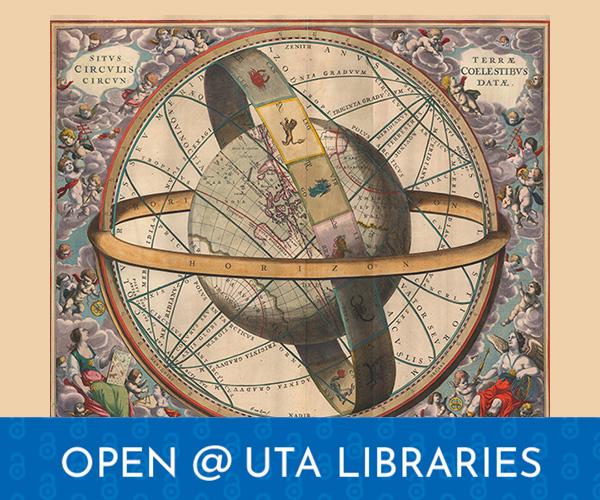
Imbedded Projects: Celestial Maps Digital Exhibit
This spring, Dr. Kimberly Breuer, Associate Professor of Instruction in the Department of History, students from the HIST 4341 Medieval Technology and Scientific Thought course, and UTA Libraries librarians and archivists came together to create exhibits centered on celestial charts and maps held in the UTA Libraries’ Special Collections. This blog will discuss how the project idea came about, what the students learned, and what open scholarly outcomes the students gained from contributing. To view the digital exhibit, click the banner below.
Creating the Partnership
Dr. Breuer was interested in creating a project that centered on the units she would teach in her history course for Spring 2024. With the total solar eclipse happening April 8th, Dr. Breuer thought this would give us a great timeline to create content around celestial maps and exploring how people from the past understood the skies and celestial events. This project morphed into a digital exhibit, which is a way to showcase research in an online format. Digital exhibits offer students an opportunity to share their research in an open way, giving access to the content freely on the internet. Digital projects, such as digital exhibits, are just one way to take part in creating open access content for researchers and other users.
The students also helped with content for the physical exhibit in UTA Libraries Special Collections and Archives titled “Theoria Eclipsium: Curiosity • Captivation • Connection” (you can see this exhibit on the 6th floor of UTA Central Libraries from now until August 31st.
Exhibit Content
Four groups of students each focused on a specific theme within the celestial maps collection: Astrology & Mythology, Scientific Knowledge, Eclipses & Comets, and an umbrella group to help with exhibit creation and design. The students chose which group they wanted to be part of based on their interest in the work (some liked the research, others the archival/digital/design aspect) or subject matter (whichever theme spoke to them more).
The students were tasked with creating banners and thumbnails for the digital exhibit. This allowed students with graphic design interests and skills to offer that to the project as well. All students supported the creation of metadata for the maps, which includes basic information about who created it, description, creation date, etc. and the text for the exhibit. The text development was an important aspect of their learning, regarding historical interpretation and connection (analysis of the maps and how they connect to each other).
Benefits of Digital Exhibits/Digital Projects
Students gained insight into what it means to create both digital and physical exhibits from conception to completion. Students also used their research skills to gather and synthesize information related to the maps from other primary and secondary sources.
This activity was part of a Hands-On History pedagogy to move instruction outside of the classroom by embedding archival research into the classroom. In addition, this project represented the opportunity to teach 21st Century history skills, to highlight career paths for history majors, and to explore creation of artifacts of research beyond the typical term research paper. - Dr. Kim Breuer
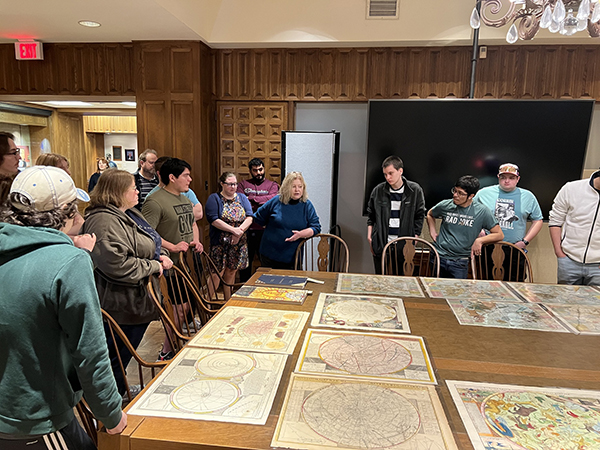
HIST 4351 students working
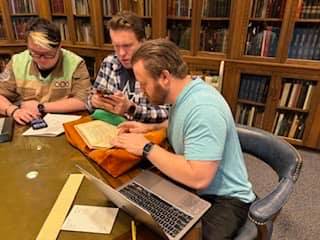
Evan Spencer and two students with a book in Special Collections

Students finalizing their research
Outcomes
Through this project, students learned important skills including researching historical topics, creating a thesis and analyzing resources, writing metadata, creating a physical and digital exhibit, and completing a digital humanities project. The students also have a scholarly outcome to share on their resume. They also have opportunities to present posters about their research for conferences and symposiums, including the Virginia Garrett lectures on the History of Cartography in Fall 2024. This project also allows them to show evidence of the skills they have learned through completing these projects and collaborating.
If you are interested in partnering with UTA Libraries on digital projects, contact librariesops@uta.edu or spcoref@uta.edu. If you are interested in partnering on other experiential learning opportunities in your classroom, visit the Experiential Learning website.



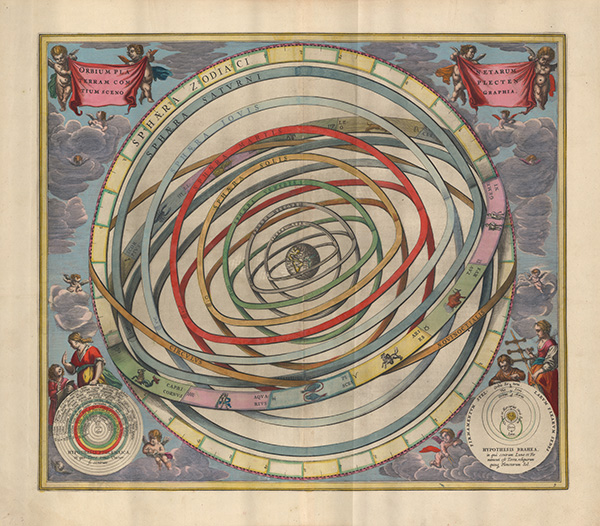
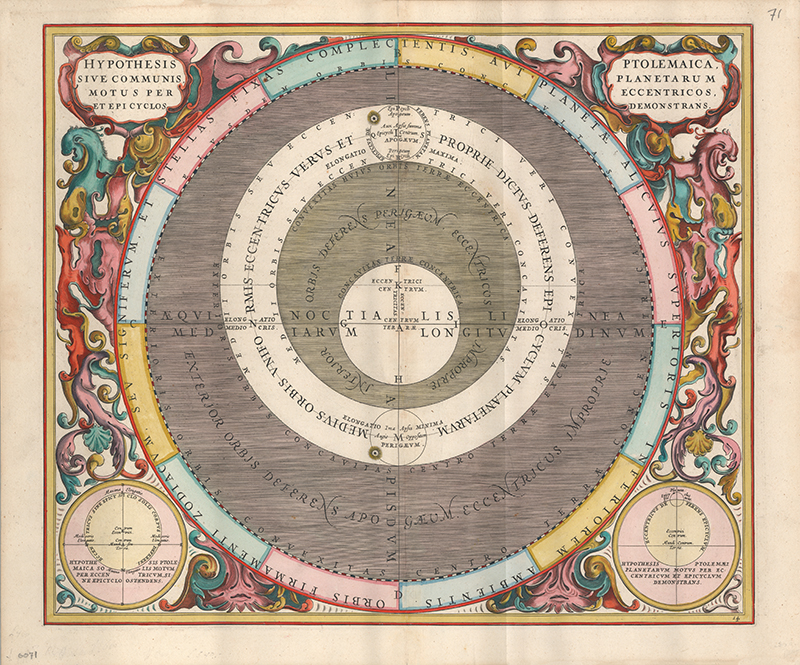
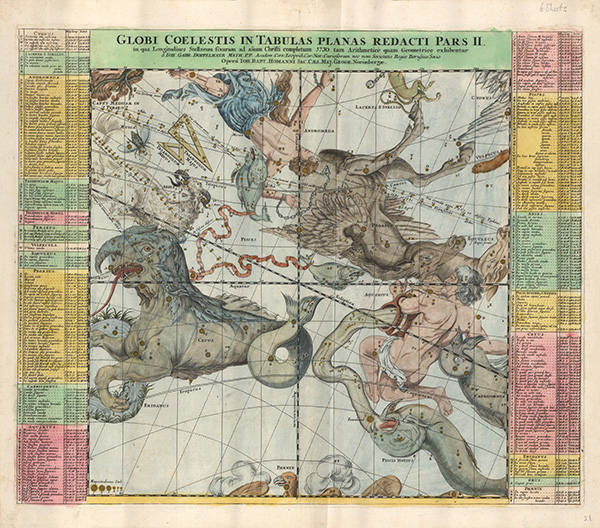
Add new comment